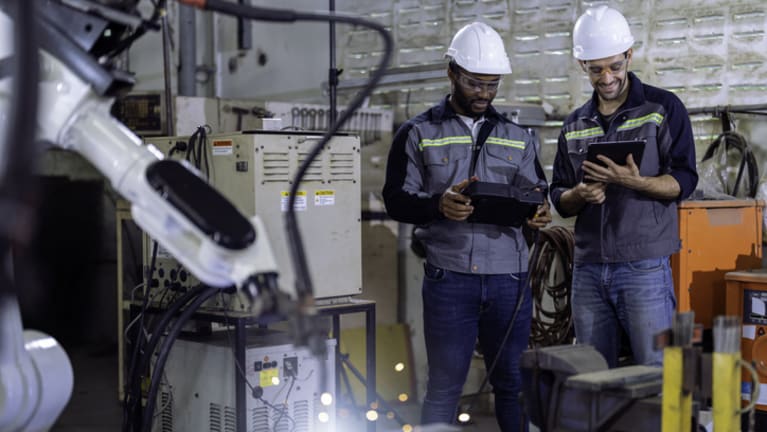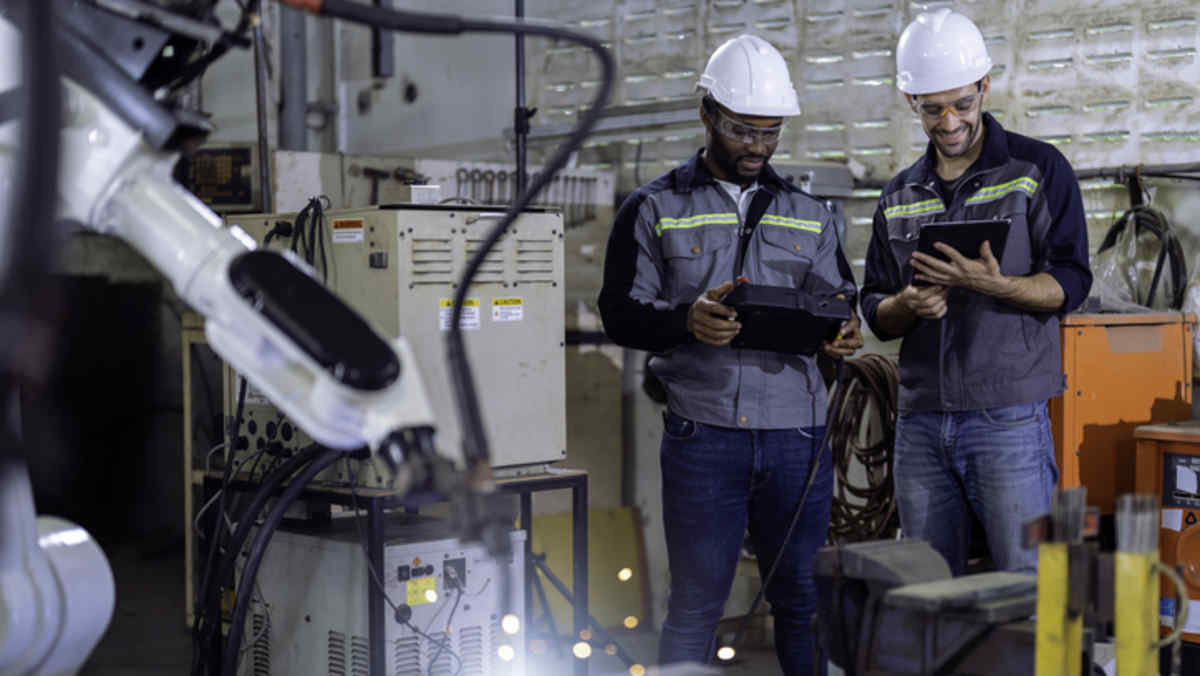

?North American companies purchased more robots in the first quarter of 2022 than they did in any single quarter on record. The increasing investment in robots comes at a time when human resource executives are grappling with the impact of the Great Resignation, labor shortages, salary increases and the ongoing issues created by the COVID-19 pandemic.
Data from the Association for Advancing Automation shows that with 11,595 robots sold at a value of $646 million, these numbers represent growth of 28 percent and 43 percent respectively compared with the first quarter of 2021, and 7 percent and 25 percent respectively over the previous record-breaking fourth quarter of 2021.
“We are in the early days of purchasing robots in the United States and throughout the world,” said Jeff Burnstein, president of the Association for Advancing Automation in Ann Arbor, Mich. “These numbers look big because they are records, but so many companies have not yet invested in even one robot and it’s just starting to penetrate certain industries.”
The data also provides further evidence that since the pandemic, nonautomotive companies in sectors such as agriculture, food and consumer goods, construction, retail, and hospitality are driving the increase in orders for robots.
With the surge in robot investments, Burnstein recommends that HR leaders prepare their workforce for the introduction of robots by making it clear that the goal is not to replace humans but to augment employees’ tasks by making their work easier and worthwhile to do.
To accomplish this, HR managers should help workers transition from performing dull, dirty, dangerous and repetitive jobs to jobs that support the management and maintenance of robots. Establishing these positions creates better jobs that people will want to do.
“Robots just don’t come in and start working on their own,” Burnstein said. “How to operate a robot, how to program one, and how to install and collect data from robots takes a lot of expertise. Robots have to be prepared, they have to be monitored and they have to be adjusted. There is a whole lot of human intelligence that is required here.”
Recent research from Gartner echoes these trends. In a Gartner study of 351 supply chain professionals conducted in the fourth quarter of 2021, 96 percent of the business executives who responded said they plan to use cyberphysical automation, which integrates computation, networking and physical processes.
Examples of cyberphysical automation are robots, cars that drive themselves or industrial conveyors that transport bulk material in warehouses.
Gartner’s numbers also show that 66 percent of respondents want to adopt cyberphysical automation because of a lack of labor availability, while 34 percent cited labor-cost reduction as a reason to adopt robots and other machinery to support organizations’ workloads.
In another study, conducted by Peerless Research Group in the first quarter of 2022, 100 business executives were polled and 52 percent of respondents said they currently use or plan to use robotics. Of that number, 86 percent said they will increase the size of their robotic fleet, and 92 percent are looking to expand over the next two years the use cases of robotic automation at their company.
According to Dwight Klappich, research vice president and Gartner Fellow in Gartner’s Logistics and Customer Fulfillment team, Gartner is seeing a very high number of customers actively looking at or piloting robots for the first time.
Klappich said the second wave of growth will come from customers expanding their fleets of robots; they might start a proof of concept with 10 robots and, if successful, could grow to 1,000 or more robots over time.
Another trend is that companies are getting better at identifying new use cases for robots, Klappich said. “Gartner believes that within 10 years, the majority of medium to large companies will have heterogeneous fleets of robots doing different things. This might be having one type of robot for collaborative picking, a different type for heavy payload transport and maybe another for item picking,” he noted.
As robot technology becomes more advanced, companies will have to find a way to manage all aspects of running robots at the workplace, from understanding how to buy robots to how to govern robots.
Part of the management of robots will include relying on HR executives to hire and train workers and to design a new business environment, along with other business unit leaders, as workers leverage robots to help them improve their performance.
“HR departments need to start working with their operational groups within the organization to bridge the intersection point between humans and robots. Very few organizations have done this,” Klappich said.
Nicole Lewis is a freelance journalist based in Miami.

